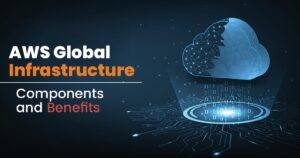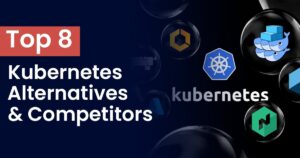
AWS Global Infrastructure: Components and Benefits
Introduction The demand for scalable, reliable, and secure cloud services has never been higher in today’s digital landscape. AWS Global Infrastructure is a beacon of
Unlock the Power of FortiGate Mastery with Our Latest Release Fortinet Certified Associate – FortiGate Operator Course. Enroll Now!

Introduction The demand for scalable, reliable, and secure cloud services has never been higher in today’s digital landscape. AWS Global Infrastructure is a beacon of

Introduction The way we manage container orchestration has been entirely transformed by Kubernetes, which has made application deployment, scaling, and management much more accessible. It’s

Introduction In the ever-evolving landscape of cloud computing, two prominent paradigms have emerged to revolutionize the way applications are deployed and managed: Function as a
Table of Contents
In today’s modern world, the way businesses and organizations operate is changing dramatically. Everything is becoming digital, and the cloud and cloud computing platforms have been a major driving force behind this transformation. Today, most firms utilize or plan to employ cloud computing for many of their activities, resulting in a tremendous increase in the demand for cloud specialists.
Now is your chance if you want to work in the cloud industry. With cloud computing platforms like AWS dominating the business environment, becoming trained and accredited on that platform could lead to good job prospects.
However, to get your AWS career started, you must develop the necessary understanding of AWS. In that spirit, here are some AWS-based questions and answers to help you through the interview process. This article includes many AWS frequently asked questions, from fundamental to sophisticated domains.
If you are interested in beginning your career in AWS, IPSpecialist is considered the best place to start your journey. Check out our AWS Courses now!
“Frequently Asked Questions” is abbreviated as “FAQs.” A FAQ page is included on most websites to allow users to ask and answer issues in a public forum. A FAQ page shows that you value customers’ time and concerns by successfully addressing whatever information your customers require. It can be a powerful and quick way to bring added benefits to your business in the following ways:
Amazon Web Services is an Amazon-provided cloud computing service. Create, test, deploy, and manage apps and services using AWS. Amazon’s data centers and infrastructure are used to do all of this.
Infrastructure-as-a-Service (IaaS), Platform-as-a-Service (PaaS), and Software-as-a-Service (SaaS) are all available through AWS.
AWS allows you to create Virtual Machines that are equipped with processing power, storage capacity, analytics, networking, and device management.
Different types of Cloud Services are:
You can employ a variety of tools. Here are some of them:
Auto-scaling is a feature that lets you create and start new instances as needed and increase and decrease resource capacity based on demand.
DDoS refers to a category of a cyberattack through which perpetrators can get access to a website and then create several sessions to stop other legitimate site visitors from accessing the platform. Enterprises can use multiple native AWS tools for preventing DDoS attacks, such as:
A VPC is the most efficient way to connect to your cloud resources within your data center. Each instance is given a private IP address that can be accessed from your data center when you join your data center to the VPC that includes your instances. As a result, you can use public cloud resources as if they were on your private network.
Elastic Transcoder is an AWS Service Tool that allows you to change the format and resolution of a video to accommodate a variety of devices with varied resolutions, such as tablets, smartphones, and laptops.
The most extensively used storage platform is Amazon S3, which stands for Simple Storage Service. Despite its adaptability, it is practically limitless and cost-effective because it is on-demand storage. Aside from these advantages, it provides new levels of durability and availability. Amazon S3 aids in cost reduction, access control, and compliance data management.
Secure login information for your Virtual Machines is stored in critical pairs. Key-Pairs with a Public Key and a Private Key can be used to connect to instances.
An Amazon data center is located in an AWS Availability Zone, a physical place. On the other hand, AWS Regions are collections or groups of Availability Zones or Data Centers.
As you may locate your VMs in different datacenters inside an AWS Region, this setup makes your services more available. Client requests are still handled from other data centers in the same Region if one of the data centers in a Region fails. As a result, even if a Data Center goes down, your service will still be available.
The data will eventually be consistent, but not immediately, and client queries will be served faster. As a result, some initial read requests may include outdated information. This consistency is preferred in systems where data does not need to be updated in real-time.
It delivers immediate consistency, ensuring that data is consistent across all database servers. However, under this paradigm, all responses are assured of having consistent data.
AWS IAM allows administrators to grant multiple users and groups granular access. Users and user groups may require varying access levels to the various resources created. Using IAM, you may assign roles to users and create roles with particular access levels.
Federated Access allows you to offer users and applications access to resources without creating IAM Roles.
The following are the features of Amazon CloudWatch:
Security best practices for Amazon EC2 include using Identity and Access Management (IAM) to control AWS resources, restricting access by allowing trusted hosts or networks to access ports on an instance, and only allowing the permissions you need to disable password-based logins for instances launched from your AMI.
Businesses employ cloud computing to provide speedier disaster recovery of essential IT systems without incurring the expense of a second physical location. The AWS cloud offers many disaster recovery topologies, from minor client workload data center failures to large-scale failover deployments. AWS offers a suite of cloud-based disaster recovery services that enable speedy recovery of your IT infrastructure and data due to its global data centers.
The Recovery Time Objective, or RTO, is the maximum length of time your firm or organization is willing to wait for recovery following an outage. On the other hand, RPO, or Recovery Point Objective, is the maximum amount of data loss your company is willing to tolerate in terms of time.
The owner of AWS Resources is the same as an Administrator User. The Administrator user can create, modify, delete, and inspect resources and provide access to other AWS users.
A Power User is given Administrator access without the ability to govern users and permissions. A user with Power User Access cannot provide permissions to other users, but they can change, delete, view, and create resources.
Elastic Load Balancing can handle three different types of load balancers:
AWS WAF, or AWS Web Application Firewall, defends your web applications against web exploits. It aids in the management of traffic to your applications. Custom rules can be created using WAF to block typical attack patterns. It has three applications: allowing all requests, preventing them, and counting all requests for a new policy.
T2 Instances enable the capacity to burst to higher performance as needed by the workload while simultaneously providing a moderate baseline performance to the CPU.
T2 instances are General Purpose instance types that are also inexpensive. They are typically utilized in tasks that do not continuously require the CPU.
The AWS mentioned above questions and answers are instances of what you can encounter. These questions and answers give you a good idea of the scope of the AWS domain.
© 2022 All rights reserved | Privacy Policy | Terms and Conditions | Sitemap




